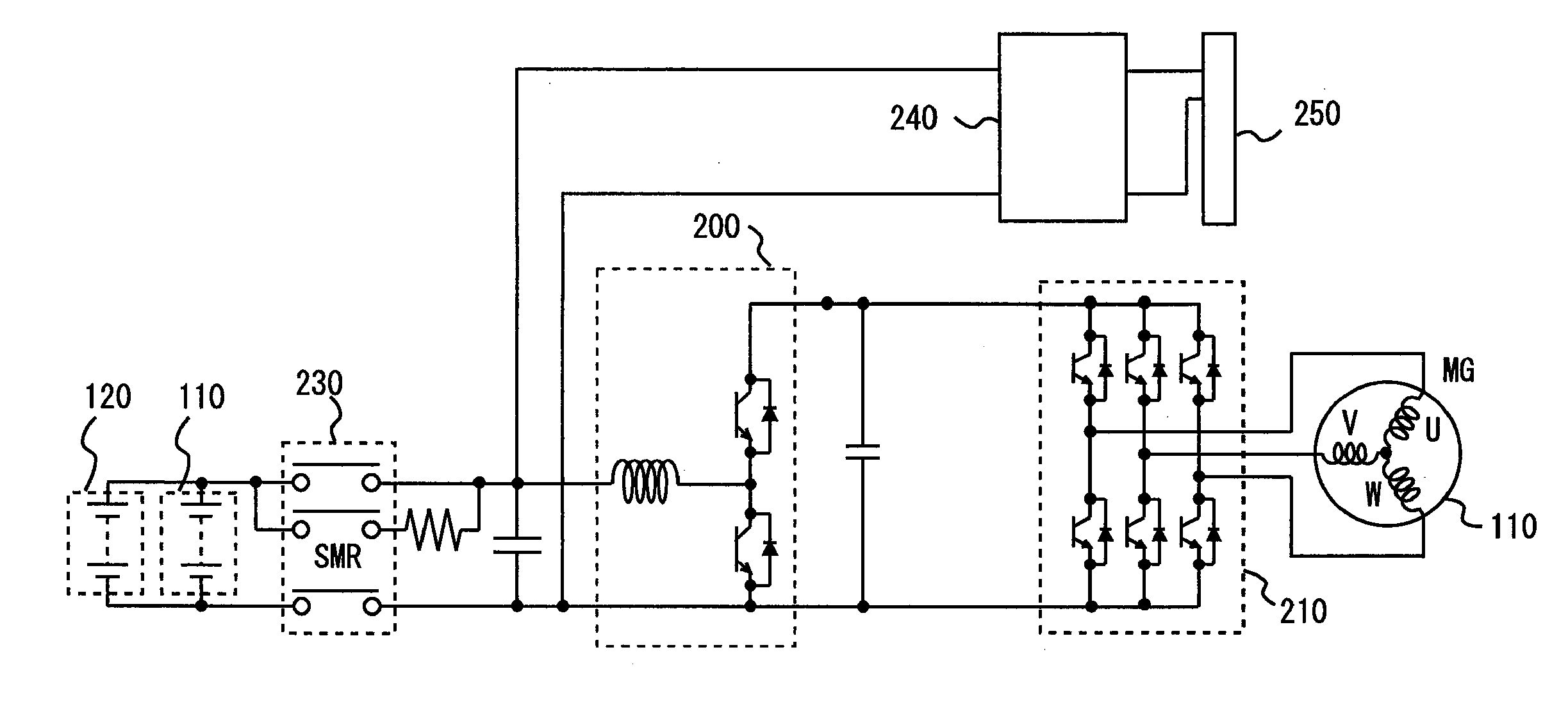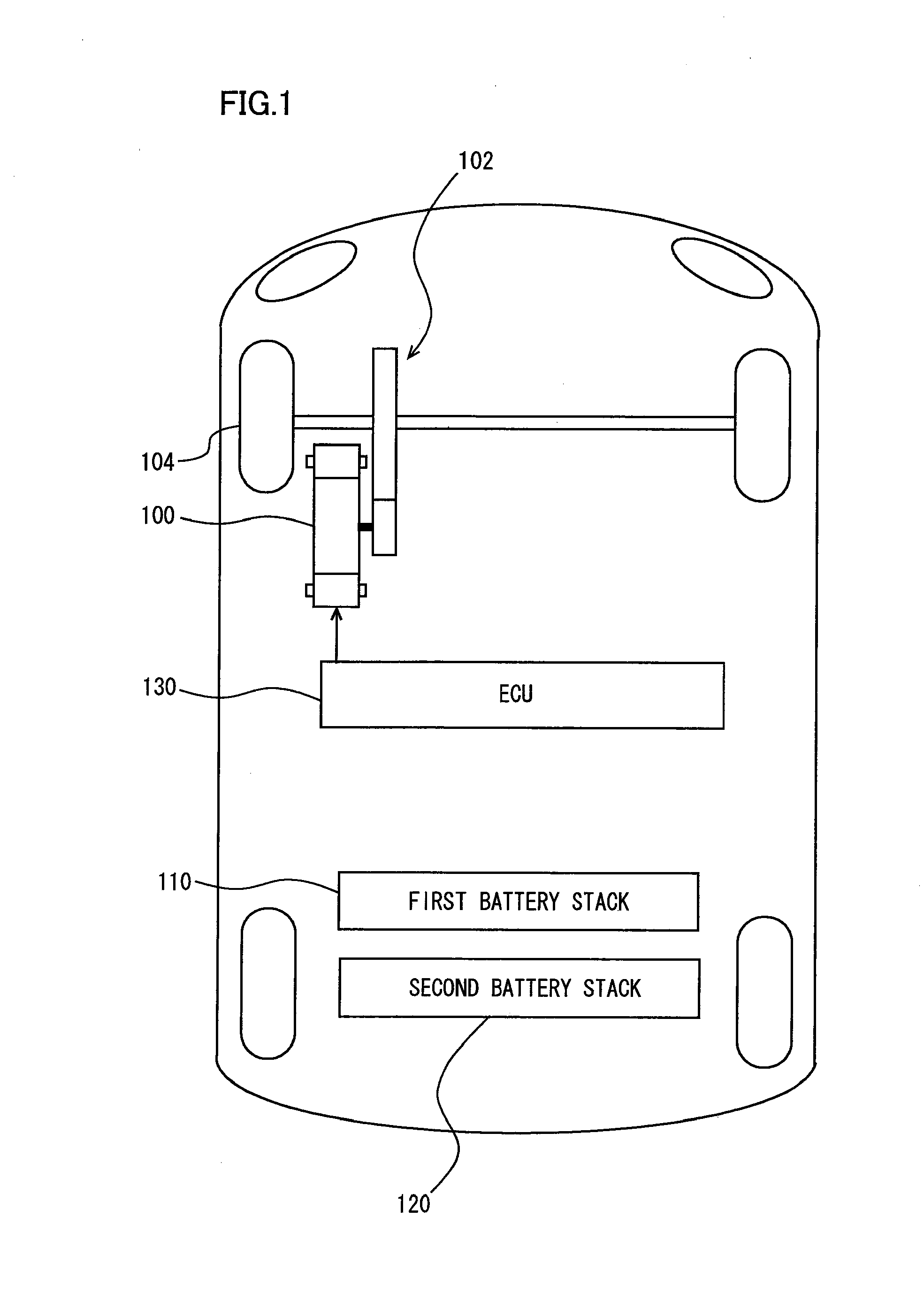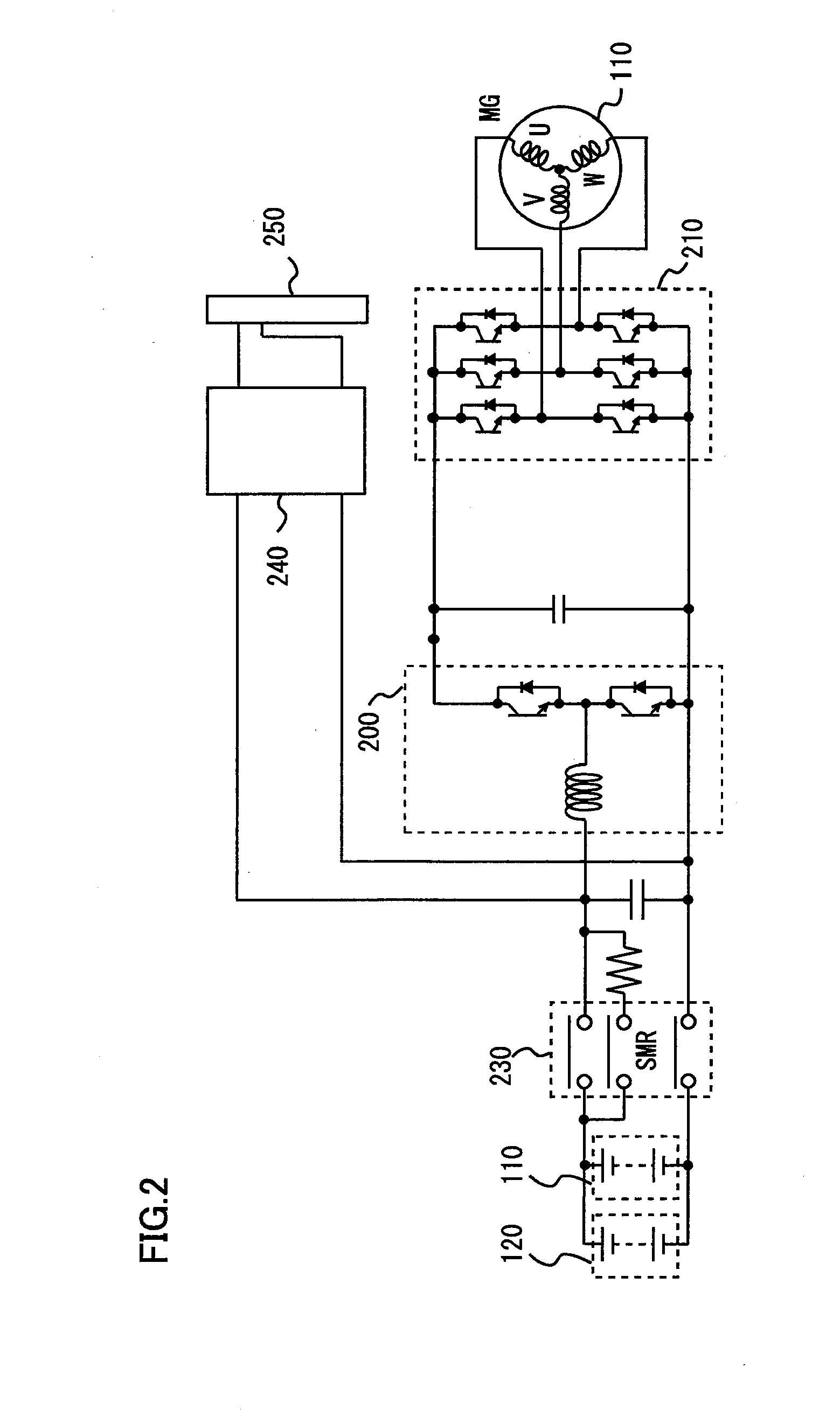Apparatus for calculating state of charge, method of calculating state of charge, and electric system
- Summary
- Abstract
- Description
- Claims
- Application Information
AI Technical Summary
Benefits of technology
Problems solved by technology
Method used
Image
Examples
Embodiment Construction
[0040]The embodiments of the present invention will be hereinafter described with reference to the accompanying drawings, in which the same components are designated by the same reference characters. Names and functions thereof are the same, and therefore, description thereof will not be repeated.
[0041]Referring to FIG. 1, an electric vehicle will be described. This electric vehicle is equipped with an electric motor 100, a first battery stack 110 and a second battery stack 120. The electric vehicle runs using electric motor 100 as a driving source supplied with electric power from first battery stack 110 and second battery stack 120. A hybrid vehicle equipped with an internal combustion engine in addition to electric motor 100 may be employed instead.
[0042]Electric motor 100 is controlled by an ECU (Electronic Control Unit) 130. ECU 130 may be divided into a plurality of ECUs.
[0043]Electric motor 100 is a three-phase alternating-current rotating electric machine having a U-phase co...
PUM
 Login to View More
Login to View More Abstract
Description
Claims
Application Information
 Login to View More
Login to View More - R&D
- Intellectual Property
- Life Sciences
- Materials
- Tech Scout
- Unparalleled Data Quality
- Higher Quality Content
- 60% Fewer Hallucinations
Browse by: Latest US Patents, China's latest patents, Technical Efficacy Thesaurus, Application Domain, Technology Topic, Popular Technical Reports.
© 2025 PatSnap. All rights reserved.Legal|Privacy policy|Modern Slavery Act Transparency Statement|Sitemap|About US| Contact US: help@patsnap.com



